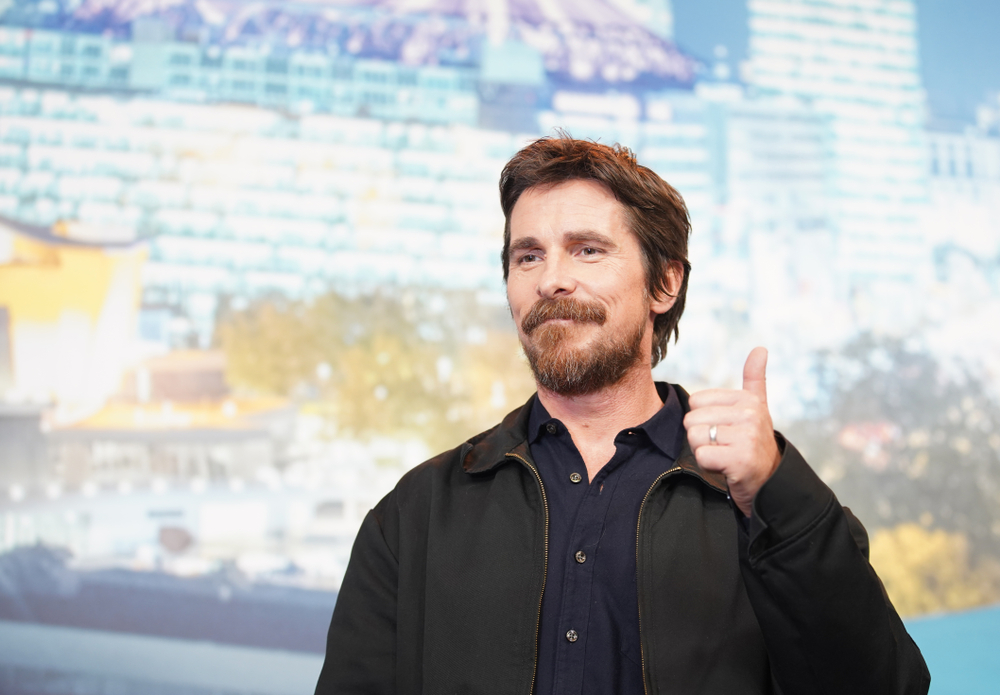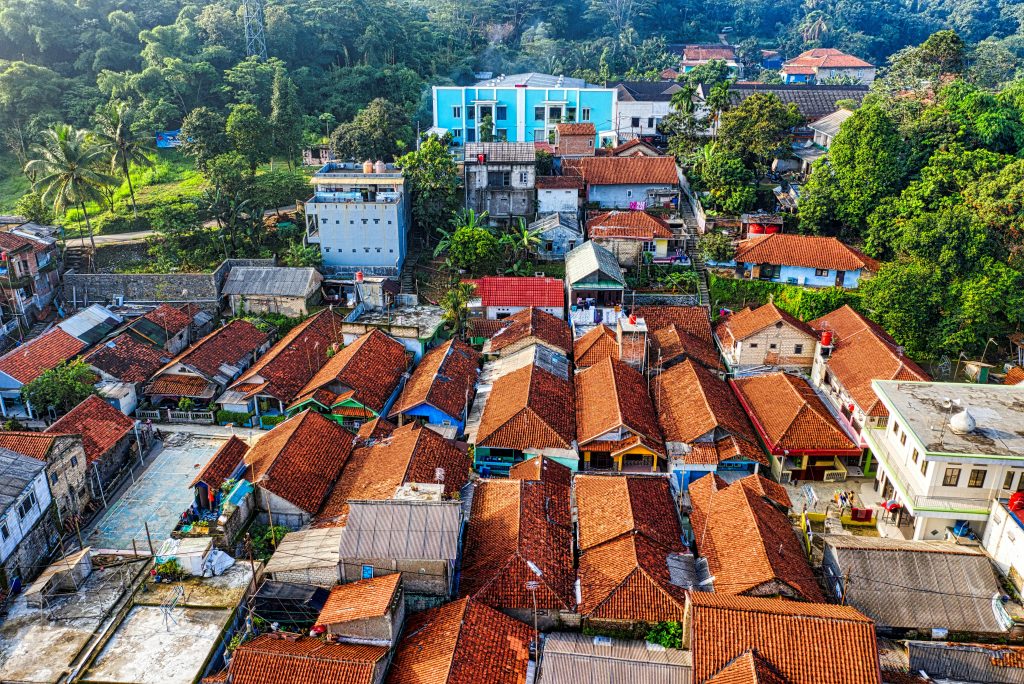Your cart is currently empty!
Christian Bale Is Building a $22 Million Village to Keep Siblings Together in Foster Care

What happens when real life asks more of a person than any script ever could? For Christian Bale, the answer is taking shape not on a film set, but in the high desert of California. While his name is often linked to blockbuster roles and Oscar wins, Bale has quietly spent nearly two decades working toward a project with no red carpet and no box office returns: a $22 million foster village designed to keep siblings together.
The need is staggering. In the United States, up to three-quarters of children in foster care are separated from their brothers and sisters. Los Angeles County alone has more foster kids than anywhere else in the nation. For Bale, the thought of children losing not only their parents but also the one family bond they could cling to was a call to action he could not ignore.
Now, on a plot of land in Palmdale, about 60 miles north of Los Angeles, that vision is becoming brick-and-mortar reality. Together California, the nonprofit Bale co-founded with his wife, Sibi, and UCLA’s Dr. Eric Esrailian, is building a village unlike anything else in the state a place where family ties aren’t an afterthought but the foundation.
The Vision Behind Together California
Christian Bale’s latest role doesn’t involve costumes or cameras, but the stakes feel just as high. With Together California, the nonprofit he co-founded, Bale is working to reimagine what foster care can look like when dignity and family unity are placed at the center.
The $22 million project, now under construction in Palmdale, is built around a simple but powerful idea: siblings should grow up together, not apart. The village will include 12 family-style homes, each able to house groups of brothers and sisters, along with two studio apartments for young adults transitioning out of care.
At the heart of the development, a 7,000-square-foot community center will serve as a hub for recreation, education, and support services, surrounded by gardens, play areas, and sports spaces designed to foster connection and stability.
Unlike traditional group homes, the design emphasizes warmth and permanence. Each house will be overseen by trained foster parents whose sole role is to nurture and support the children in their care, creating an environment that feels more like a neighborhood than an institution. Bale describes the model as “something absolutely new, totally transformative and something completely needed,” underscoring his belief that children deserve more than temporary solutions they deserve a home where love and family ties are preserved.
A Mission Years in the Making

The path to Palmdale has been anything but quick. Christian Bale first felt compelled to act in 2005, shortly after the birth of his daughter, when he found himself imagining what her life might look like if she were left without parents. That thought led him to research foster care in Los Angeles and to a sobering discovery. The county not only had the largest foster care population in the United States, but countless siblings were being split apart in the process. Bale has said he was “stunned and mad” to learn this reality, and he and his wife, Sibi, committed themselves to doing whatever they could to help.
What began as an urgent impulse soon collided with the slow grind of planning, approvals, and fundraising. Bale admits that in the beginning he thought he could launch the project in a single year, joking that he had pictured a “Sound of Music” scene with children joyfully singing on the hills. Instead, he learned how complicated and bureaucratic it could be to build something entirely new within the foster care system. Yet he never flinched.
Over nearly two decades, Bale sought out experts who could turn his vision into something workable. He connected with Tim McCormick, who had spent decades running innovative foster homes in Chicago, and eventually partnered with UCLA’s Dr. Eric Esrailian to co-found Together California. By 2022, the group had secured land in Palmdale, and in early 2024, shovels finally broke ground on what will become the first village of its kind in California.
For Bale, the long delays have only reinforced the importance of persistence. “It takes an awful long time and really well-motivated people,” he has said, acknowledging both the difficulty and the necessity of the work. What could have remained a passing philanthropic gesture has instead become a defining personal mission, one he hopes will outlast his acting career and ripple far beyond the first set of homes.
The Team Driving the Project

While Christian Bale has been the most visible face of Together California, the village is the product of a wide network of expertise and collaboration. Bale co-founded the nonprofit with his wife, Sibi, and Dr. Eric Esrailian, a physician and professor at UCLA known for his work in public health and social impact initiatives. Esrailian has been instrumental in navigating the complex logistics of bringing the project to life, from policy and fundraising to community engagement.
Bale also turned to Tim McCormick, an experienced foster care leader who spent more than 18 years developing innovative housing systems for children in Chicago. McCormick now serves as the project’s executive director, shaping the program model and ensuring that the day-to-day realities align with its family-first vision.
On the design side, the architecture firm AC Martin has been tasked with translating Bale’s vision into tangible form. Though the project is modest in scale compared with their typical high-rises and commercial developments, AC Martin’s leadership has described it as one of their most meaningful commissions. CEO Tom Hsieh has said the firm views the village not only as a design challenge, but as a civic responsibility an opportunity to create structures that prioritize humanity over utility.
This coalition of talent has expanded the project well beyond celebrity philanthropy. Bale himself has emphasized that his passion alone could not carry the idea forward; it required professionals who understood the nuances of foster care and community building. Together, the team reflects a shared belief that systemic problems demand more than goodwill they require infrastructure, expertise, and collaboration.
Designing for Families, Not Institutions

The guiding principle of Together California is that children deserve a home, not a facility. From the ground up, the Palmdale village is being designed to feel like a neighborhood rather than a system. Instead of dormitory-style group housing, the plan calls for 12 family-style homes, each capable of sheltering up to six siblings under one roof. Full-time foster parents will live in the homes, creating stability and continuity rather than the rotating supervision common in traditional group settings.
The emphasis on design goes beyond functionality. Gardens, outdoor recreation areas, and sports spaces will be integrated into the community to give children the experience of growing up in an environment that values play, learning, and connection. Two studio apartments will serve as transitional spaces for older youth, providing a crucial bridge between foster care and independent living. This element addresses one of the most vulnerable points in the system, when young people age out of care without a safety net.
Bale has been closely involved in these decisions, walking the site to assess everything from school proximity to access to stores and community resources. He describes himself as “obsessive” about details, and his involvement underscores how personal the project is. Rather than simply writing a check, he has worked with architects to ensure the village feels warm, livable, and above all, non-institutional.
The Foster Care Crisis

The urgency behind Together California becomes clear when looking at the scale of the foster care challenge in the United States. According to the U.S. Department of Health and Human Services, more than 390,000 children were in foster care as of 2022. In Los Angeles County alone the largest foster care population in the country thousands of children navigate a system that often prioritizes placement availability over family preservation.
One of the most painful consequences is sibling separation. Studies show that as many as 75 percent of foster children in the U.S. are separated from at least one sibling after entering the system. For children already coping with the trauma of losing parents, this loss compounds their sense of instability and grief. Research consistently links sibling separation to poorer emotional, social, and developmental outcomes, from lower self-esteem to higher rates of depression.
By centering sibling unity, Together California directly addresses a gap in the system that has long been accepted as inevitable. Its model offers not only a physical place to house children but also a framework that challenges the idea that keeping families together is too difficult or costly. As Bale himself put it, “That’s no way to treat kids.”
A Legacy Beyond Hollywood

For Christian Bale, the foster village is not just another philanthropic effort it is a defining chapter of his life. While his career has earned him an Academy Award and a reputation as one of Hollywood’s most versatile actors, he sees this project as the work he will remember most. “When I’m closing my eyes for the last time, I want to think, ‘Did I do some good? Did I make any changes in the world that were useful?’ This will be one of the things I’ll be most proud of,” he has said.
Bale’s commitment to social causes runs deep in his family history. His late father, David Bale, was a passionate activist who worked with organizations like the Dian Fossey Gorilla Fund and the Humane Society, instilling in his son a sense of responsibility to act. Christian recalls childhood memories of joining his father at protests and welcoming people in need into their home, experiences that left a lasting imprint on how he views service and community.
Now, with Together California, Bale is extending that legacy in his own way. He and his wife, Sibi, have invested not just money but years of their lives to ensure the village is built thoughtfully and sustainably. His hands-on involvement from obsessing over site details to fundraising and rallying support underscores how personal the mission has become.
The Real Role of a Lifetime
Christian Bale has spent his career embodying complex characters, from tortured heroes to ruthless villains, but his foster village in Palmdale may stand as his most enduring role: a real-life architect of hope. By tackling one of foster care’s deepest flaws the separation of siblings he is reframing what society owes to its most vulnerable children.
The village is not simply a charitable gesture. It is a bold statement that family bonds matter, that architecture can carry values, and that one individual, working with the right team, can shift the trajectory of an entire system. Its impact will not be measured in box office numbers or critical acclaim but in the lives of children who will grow up with their brothers and sisters beside them.
For Bale, this is the kind of work that defines a legacy, one not rooted in Hollywood but in humanity. And for the children who will one day call the Palmdale village home, it is the promise of something every child deserves: the chance to belong, together.
